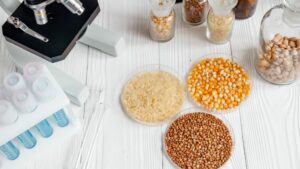The Food Safety Pathogen Working Group convened at ASTA’s 131st Annual Convention to evaluate its statement summarizing the association’s position on seed as it relates to food safety.
The California Seed Association’s Betsy Peterson, who chairs the working group, says the group has been active since 2006. Through the working group, the seed industry closely monitors food safety pathogen outbreaks, evaluates and incorporates quality management systems and procedures into seed production programs where appropriate, and keeps abreast of ongoing research activities to help ensure that seed does not become exposed to, or contaminated with, human pathogens.
Peterson explains that seed that’s grown for planting in a field or greenhouse setting is not a threat; therefore, there’s no need for seed testing. Through its literature review, ASTA maintains that there is no significant value in requiring testing of seed lots for the presence of human pathogens and that such testing would not prevent future food illnesses emanating from produce.
However, Peterson says sprout seeds fall into a different category. “The way in which sprouts are grown is conducive for the growth of pathogens,” she says. And the U.S. Food and Drug Administration, through the Food Safety Modernization Act, agrees with this breakout and has included seeds for sprouts under the produce section, which is a different category than seed used for feed or grain.
“That basically supports what we’ve been saying all along,” Peterson says. “The FDA is trying to determine the sources of food safety pathogens so there’s been a lot of effort put toward this.”
Peterson reports that for the past six years, the Center for Produce Safety in California has been researching produce and food safety issues. “They look at irrigation, bees and flies, and people as potential sources,” she says. “They look at what’s transmitting the pathogens from the site of origin to the food.”
One of the biggest problems is raw food, Peterson says. She explains that when raw produce is consumed, the step in the food process that can kill any existing pathogens has been removed.
Peterson refers to remarks made by Jeri Barak, a University of Wisconsin plant pathologist, saying that as consumers, everyone has a role to play in food safety.
“If you went to the grocery store and purchased ice cream, you will think twice about making another stop on your way home,” she explains. “You need to treat spinach and other fresh produce the same way — it should maintain a temperature of no more than 40 degrees. We all have a roll to play in food safety.”
Individuals interested in getting involved in ASTA’s Food Safety Pathogen Working Group can participate at ASTA’s Annual Convention and the Vegetable and Flower Seed Conference or by contacting Peterson at CSA or Ric Dunkle at ASTA.












